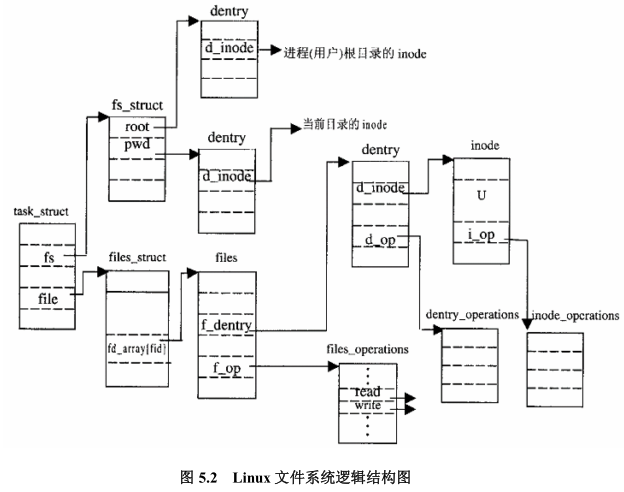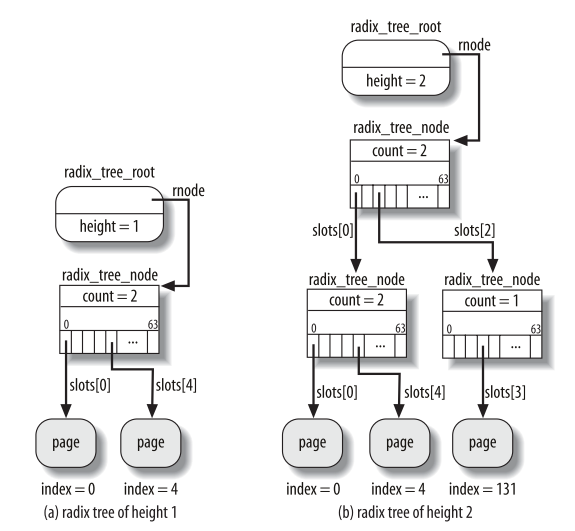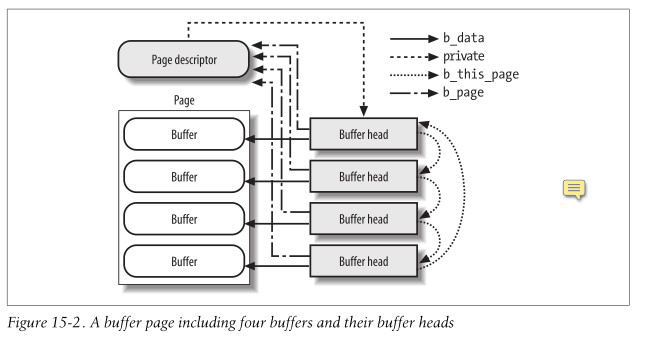Short Notes on File System
Published:
Data structures
filea file struct represents a physical file’s context, different processes, or even the same process can open one file multiple times, therefore has multiple file struct.dentrymultiple dentry can point to the same inodeinodeone-to-one mapping with the real file on disk
Process and file
task_structstruct containsstruct fs_struct *fsandstruct files_struct *filesfs_structdefines the root directory of this processfiles_structmaintains a list of file struct than opened by this process

Figure credit to Linux内核源代码情景分析
Page cache
- Page cache in kernel is organized per physical file, so it is contained in the inode, which is one-to-one mapping to physical file
inodecontainsi_mapping, which isaddress_spaceand contains the page cache for that file.struct address_space { struct inode *host; /* owner: inode, block_device */ struct radix_tree_root page_tree; /* radix tree of all pages */ spinlock_t tree_lock; /* and lock protecting it */ unsigned int i_mmap_writable;/* count VM_SHARED mappings */ struct prio_tree_root i_mmap; /* tree of private and shared mappings */ struct list_head i_mmap_nonlinear;/*list VM_NONLINEAR mappings */ struct mutex i_mmap_mutex; /* protect tree, count, list */ /* Protected by tree_lock together with the radix tree */ unsigned long nrpages; /* number of total pages */ pgoff_t writeback_index;/* writeback starts here */ const struct address_space_operations *a_ops; /* methods */ unsigned long flags; /* error bits/gfp mask */ struct backing_dev_info *backing_dev_info; /* device readahead, etc */ spinlock_t private_lock; /* for use by the address_space */ struct list_head private_list; /* ditto */ struct address_space *assoc_mapping; /* ditto */ } __attribute__((aligned(sizeof(long))));page_treecontains the page cache, which is indexed by using radix tree. More details of page cache is in Understanding the Linux kernel, Chapter 15.
Figure credit to Understanding the Linux Kernel
- In order to be compatible with the underline block based device, the page cache all need to store the block, each page needs to point to a cyclic linked list with four buffer heads

Figure credit to Understanding the Linux Kernel
References
- Understanding the Linux Kernel
- Linux内核源代码情景分析